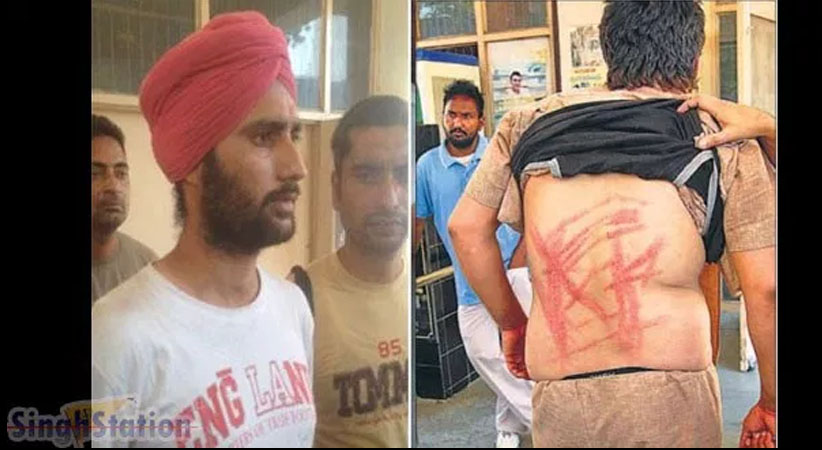NEWS & MEDIA
NEWS & MEDIA
India : Kerala : Delhi | 2017-09-30Fighting the “Love Jihad” : India is working itself into a frenzy about interfaith marriages

Hindu Nationalists warn of a Muslim plot to seduce Hindu Women

THE older woman’s slaps come quick and hard, followed by a shrill, “Have you no shame?” The younger woman sits still, eyes downcast, holding a hesitant hand to her stinging cheek as if in disbelief. Captured earlier this month in the city of Aligarh, 140km south-east of the Indian capital, Delhi, this little act of violence was mild by the standards of videos that go viral across India’s 1.2bn mobile phones.
Yet the scene was widely shared, and for compelling reasons. The two women were complete strangers. The older one happens to be Sangeeta Varshney, a prominent local member of India’s ruling party. The younger woman, who is Hindu, had been spotted sitting in a teahouse with a man who is Muslim. In a later interview on television, Ms Varshney explained that as a mother and a Hindu herself, she had a God-given right to hit the other woman. This was, she continued, a clear-cut case of “love jihad”.
Ms Varshney is far from alone in believing that the 80% of Indians who are Hindu face a concerted, predatory effort to entice their womenfolk away from the faith. One populist Hindu organisation’s helpline claims to have “rescued” 8,500 girls from “love jihad”. A website called Struggle for Hindu Existence carries endless titillating stories about Muslim youths luring Hindu maidens into wickedness. Repeated police investigations have failed to find evidence of any organised plan of conversion. Reporters have repeatedly exposed claims of “love jihad” as at best fevered fantasies and at worst, deliberate election-time inventions. Indian law erects no barriers to marriages between faiths, or against conversion by willing and informed consent. Yet the idea still sticks, even when the supposed “victims” dismiss it as nonsense.
In May, a court in the southern state of Kerala summarily annulled a five-month-old marriage on grounds that the wife, a convert to Islam, had disobeyed her parents and been lured into a potentially dangerous liaison with a Muslim man. Sensitivities in Kerala have been high since the discovery, last year, that several newly-wed Muslim couples had emigrated to fight for Islamic State. Still, it seemed bizarre for a judge to order this 24-year-old woman, who had converted a year before meeting her future husband, while studying at a medical institute, to return to her parents’ house. She has been held there ever since, under police guard and, say the few who have attempted to visit her, against her will. Even as her husband mounted a legal challenge to the divorce ruling, India’s supreme court in August ordered a special anti-terror unit to investigate his background.
It is not only Muslims who are accused of preying on Hindu women. A 28-year-old Hindu woman filed charges against a yoga centre in Kerala earlier this month, alleging that she had been held there against her will for three weeks, abused and indoctrinated in an attempt to make her divorce her Christian husband. Her affidavit alleged that another 60 women had been held at the centre in similar circumstances.
And it is not just Hindus who harbour suspicions. Earlier this month a Buddhist organisation in Ladakh, a mountainous region on the borders of Tibet, issued a stark warning. All Muslims in the area would have to leave, or risk the consequences, unless Syed Murtaza Agha “returned” his wife, Stanzin Saldon, to her Buddhist family. For several days Muslim-owned shops in the region stayed shut, but the danger seems to have passed. Miss Saldon, a 30-year-old development consultant who says she converted to Islam five years ago, published a persuasively eloquent letter in Indian newspapers. It states bluntly that she married out of love and for no other reason, and feels insulted by the accusation that she might not be able to think for herself. The Buddhist elders, who had termed conversion a “wicked and depraved act”, have fallen silent.
“Women often become a marker when sharper lines get drawn between communities,” says Charu Gupta, a historian at Delhi University. Efforts by the ruling Bharatiya Janata Party (BJP) to build inter-caste alliances among Hindus have brought religious differences more to the fore, she believes. Still, says Ms Gupta, it is a shame to see state institutions and India’s courts take on the role of prejudiced patriarchs: “They have internalised a demonisation of the Muslim male, and see women as essentially foolish and immature.”
In Aligarh, police did not arrest Ms Varshney for assaulting a young woman. They did not bother the Hindu vigilantes who had hauled the couple out of a teahouse. But they charged the Muslim boyfriend with “lewd behaviour”. Only several days later, following a public outcry over the video clip and at the prompting of local women’s-rights groups, were charges pressed against Ms Varshney.
This article appeared in the Asia section of the print edition under the headline "Invading the bedroom"
LINK : https://www.economist.com/node/21729806
URL: https://www.economist.com/asia/2017/09/30/india-is-working-itself-into-a-frenzy-about-interfaith-marriages
The Economist
Link to Source: https://www.economist.com/node/21729806





